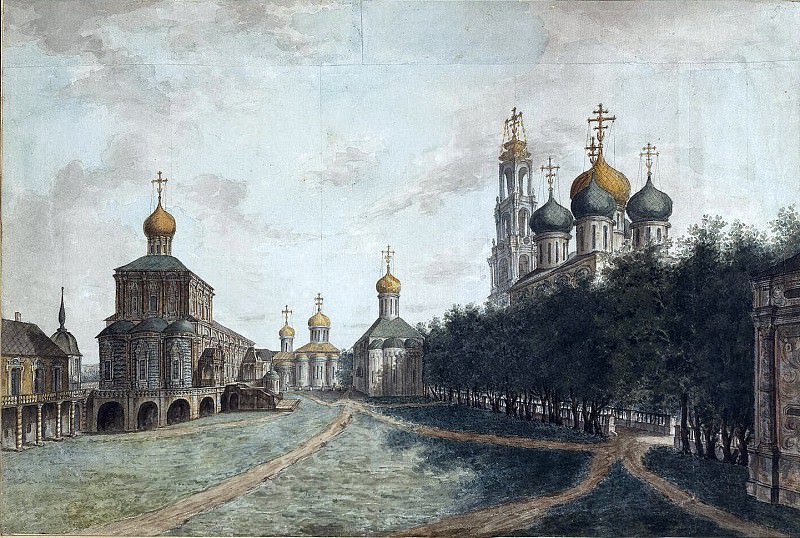Trinity Sergius Lavra Fedor Alexeev (1753-1824)
Fedor Alexeev – Trinity Sergius Lavra
Edit attribution
Download full size: 1441×969 px (0,3 Mb)
Painter: Fedor Alexeev
Alexeev is a Russian landscape painter, the most famous Russian master of the urban landscape, in fact the first among Russian painters. Prior to that, artists had been more about nature, its beauty and completeness - but Alekseev depicted cities as places that could tell about people far more than they know themselves, more even than some portraits. He began by painting scenery. But in time he became famous, and wrote even at the order of the emperor. "Trinity Sergius Lavra." - his work, written for the soul, in his usual attentive, careful and reverent manner.
Description of the painting "Trinity Sergius Lavra" by Fyodor Alekseev
Alexeev is a Russian landscape painter, the most famous Russian master of the urban landscape, in fact the first among Russian painters. Prior to that, artists had been more about nature, its beauty and completeness - but Alekseev depicted cities as places that could tell about people far more than they know themselves, more even than some portraits. He began by painting scenery. But in time he became famous, and wrote even at the order of the emperor.
"Trinity Sergius Lavra." - his work, written for the soul, in his usual attentive, careful and reverent manner. It was as if he took the measure of reality and applied it to the picture - imprinted one place and on his canvas, it remained unchanged for many years.
Trinity-Sergius Lavra is a men’s monastery, the largest in Russia, not subordinate to the local diocese, but under the personal supervision of the patriarch. For example, the monks of the Lavra resisted the supporters of False Dmitri in the Time of Troubles.
The painting, however, shows no trace of those years. On the contrary, it seems very bright - high domes topped with crosses, white walls, traditional church architecture, a small alley, to which flows the trampled paths. The sky is as high as the ceiling of the temple. Golden sunlight floods the laurel and fills it with a foreboding sense of good. In this light, the grass in the picture looks like water - it seems that if a monk were walking along the path, if he stumbled, he would get his feet wet.
Looking at the painting, one feels that the place depicted was holy to the artist. He painted it in light colors, carefully, as if he was afraid of not being able to transfer a certain spirit on paper, to deprive the place of light, leaving it empty and dead.
But this fear did not materialize. The light remained in the painting, and will remain with it forever.
Кому понравилось
Пожалуйста, подождите
На эту операцию может потребоваться несколько секунд.
Информация появится в новом окне,
если открытие новых окон не запрещено в настройках вашего браузера.
You need to login
Для работы с коллекциями – пожалуйста, войдите в аккаунт (open in new window).




















You cannot comment Why?
The artist has employed a perspective that emphasizes depth and scale. The receding road creates a sense of vastness, while the diminishing size of figures in the distance reinforces this impression. A line of individuals is visible along the right side of the composition, seemingly engaged in procession or movement towards the central buildings. Their presence adds a human element to the scene, suggesting activity and devotion within the monastic setting.
The color palette is restrained, primarily consisting of earthy greens, browns, and grays, which contribute to an atmosphere of solemnity and tranquility. The sky is rendered with subtle gradations of gray, evoking a sense of overcast weather or diffused light.
Beyond the immediate depiction of architectural grandeur, the painting hints at themes of faith, community, and pilgrimage. The arrangement of buildings around a central space suggests a focus on spiritual gathering and worship. The procession of figures implies a ritualistic practice or a journey undertaken for religious purposes. The overall impression is one of reverence and contemplation within a secluded, historically significant location.
The visible paper grain and the somewhat loose application of watercolor suggest a work created with an emphasis on capturing a fleeting visual impression rather than meticulous detail. This approach lends the painting a sense of immediacy and authenticity, as if documenting a specific moment in time.